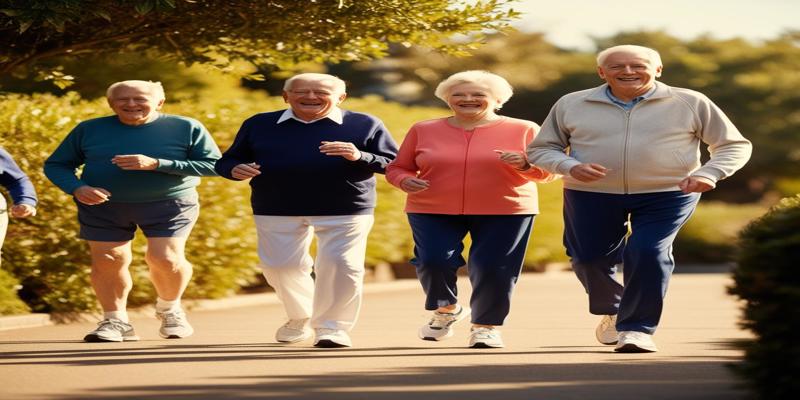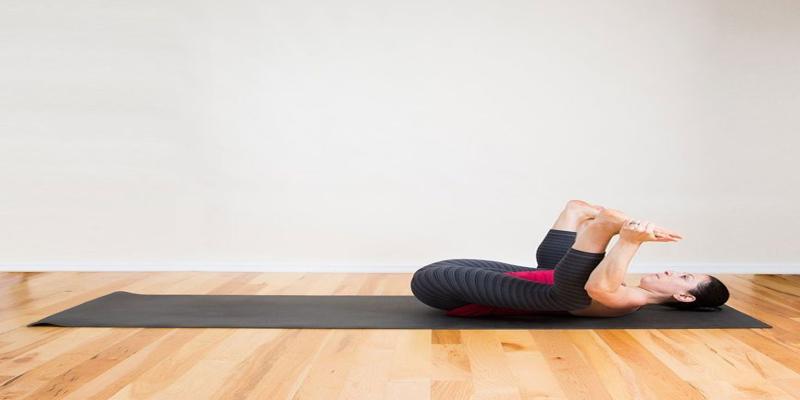Advertisement
The older you get, the more critical it is to be active to stay healthy and independent. However, research also suggests that older adults must walk more and pick up their pace. This article draws on recent recommendations for seniors to walk briskly and includes some practical tips on safely incorporating this simple yet effective form of exercise into your daily routine.
 Cardiovascular Benefits
Cardiovascular BenefitsBrisk walking is a low-impact workout that yields great cardiovascular benefits in older adults. As you walk faster, your heart rate will rise, which in turn enhances blood circulation and oxygen delivery throughout your body. This can help lower blood pressure, reduce risks of heart disease, and strengthen heart health overall. Regular brisk walking has also been shown to improve cholesterol levels by potentially reducing LDL cholesterol while increasing HDL cholesterol.
Brisk walking is significant for maintaining and enhancing bone density in aging people. This aerobic weight-bearing activity encourages bone growth, which will help prevent osteoporosis and fractures. Besides, repetitive motion during walking strengthens the leg muscles, enhances balance, and promotes overall stability, which is crucial in preventing falls later in life.
The benefits of brisk walking are not limited to physical health. Regular brisk walks can significantly affect mental health and cognitive functioning. Exercises were shown to release endorphins, which are a naturally occurring elevation of mood that aids in symptoms of depression and anxiety. Furthermore, increased blood flow to the brain during brisk walking may improve memory, reduce cognitive decline risks, and even lower the risk of dementia or Alzheimer's disease.
Brisk walking can be an individual and social activity that involves community involvement. This may be achieved by either walking groups or casual walking with friends. It will provide much-needed social contact to help curb the sense of isolation that many older adults experience. Besides, walking briskly promotes independence in daily activities and improves the quality of life in later years.
With increased walking, heart rates increase, offering better aerobic exercise. The heightened activity will strengthen your heart muscle, improve blood flow, and may even eventually decrease blood pressure. Overall, regular brisk walking helps reduce the risks associated with heart disease and stroke. It is a straightforward and effective method of improving your cardiovascular health.
Increasing your walking speed can significantly affect the number of calories you burn. Although there are beneficial factors associated with a leisurely walk, it tends to be much slower and requires fewer muscles and less energy. Increased calorie use will support weight management and continue to help maintain body composition, which is very important, especially for the elderly.
Brisk walking is considered a weight-bearing exercise that contributes to maintaining and increasing bone density, decreasing osteoporosis risk. The more vigorous motion will also engage your leg muscles, your core, and even your arms if you pump them while walking. Full-body engagement this way can maintain muscle mass and strength, which tend to decrease with age.
Indeed, the benefits of more rapid-paced walks transcend even physical health. This increased intensity can stimulate the release of endorphins, known affectionately as the "feel-good" hormones. This natural elevator of mood helps reduce stress, anxiety, and symptoms of depression. Additionally, the rhythmic and repetitive nature of brisk walking can be meditative, fostering clarity and emotional well-being.
As we age, it's crucial to maintain an active lifestyle, and brisk walking is an excellent low-impact exercise. However, increasing your walking intensity requires careful consideration to ensure safety and effectiveness. Here are some strategies to help you step up your walking game:
Start by assessing your fitness level. If you have never walked briskly, start at a comfortable pace and duration and gradually increase your speed and distance over time. A general rule of thumb is to improve the time or the distance you walk each week by 10%. This rate of increase allows your body to adapt to it without injury.
Intervals are another fantastic way to raise the intensity of your walks. Try walking briskly for an interval, then switch back to your usual gait. For example, you might walk quickly for 1-2 minutes, then slow back to your average speed for 3-4 minutes. You can gradually add more time to your high-intensity intervals as you get more comfortable.
Correct walking style and form for safety and efficiency include keeping your
Please pay attention to your body and how it reacts to greater intensity. A minor muscle soreness is normal, but sharp pain or ongoing soreness may mean you are overdoing it. Always warm up before you walk and cool down afterward with light stretches. If you have any pre-existing health conditions, check with your doctor before significantly increasing your walking intensity.
 Get Your Bearings in Small Steps and Build Up
Get Your Bearings in Small Steps and Build UpPlan achievable targets for yourself for this brisk walking exercise. For example, try to walk only 10 minutes each day and extend that time as your stamina improves. Remember, consistency is critical. Walking briskly every day for shorter lengths is better than exhausting yourself sporadically.
Find opportunities to incorporate brisk walking into your daily life. Park farther away from store entrances, avoid elevators, and walk to local destinations instead of driving. All these changes can add up to significant raises in your daily step count and amount of activity.
Invite friends or join a walking group to make your brisk walks more enjoyable and motivating. Socializing while exercising can help time pass more quickly and provide accountability. Additionally, explore different routes or scenic paths in your neighborhood to keep your walks interesting and engaging.
Use a fitness tracker or apps on your phone to monitor your progress and set goals. You can track walking speed, distance, and the number of calories you have burned. Most apps will challenge or reward you for keeping you motivated and committed to brisk walking.
While challenging yourself, listen to your body during and after the walk. If you feel pain or discomfort, you must either go slower or take a break. As your fitness level improves, you should gradually build up your walking pace and duration. The goal should be that brisk walking is a long-lasting behavior for better health and well-being.
The bottom line is that a brisk walking pace can make all the difference for an older adult's health and longevity. Gradually increasing the pace and introducing interval training can make this straightforward, potent exercise most beneficial. Take a first step toward an active lifestyle todayyour future self will thank you.
Advertisement

By Georgia Vincent/Dec 05, 2024

By Pamela Andrew/Dec 03, 2024

By Juliana Daniel/Jan 21, 2025

By Elena Davis/Jan 03, 2025

By Martina Wlison/Jan 06, 2025

By Martina Wlison/Mar 18, 2025

By Aldrich Acheson/Dec 05, 2024

By Christin Shatzman/Dec 13, 2024

By Elena Davis/Dec 13, 2024

By Sid Leonard/Dec 05, 2024

By Isabella Moss/Nov 09, 2024

By Isabella Moss/Mar 18, 2025